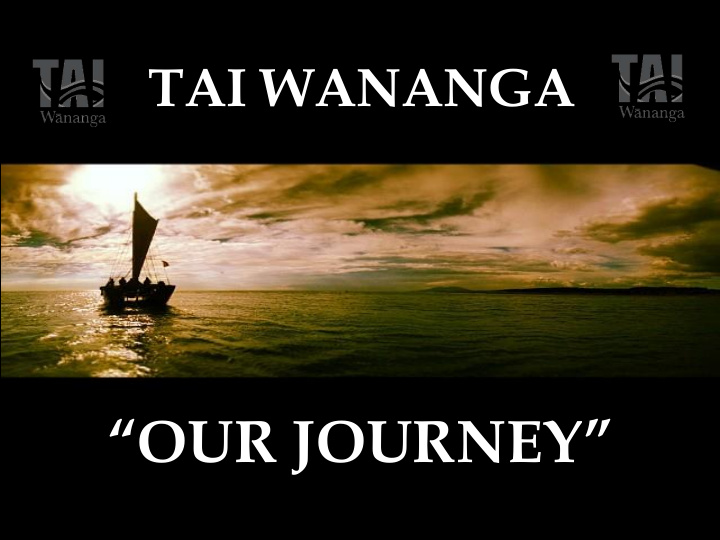



TAI WANANGA “OUR JOURNEY”
“By Giving “PURPOSE” to ‘LEARNING’ & “PURPOSE to LIFE”
All Learning Must Be For PURPOSE Purpose must be Identified & Agreed Purpose must have Clarity Purpose must be Aligned with “ITLP” Purpose must Contribute to the “Exit Strategy”
‘ITLPs are based on student career aspirations, strengths and interests’ Recognize that every student learns in a different way and at a different speed Includes student targets, goals and an Exit Strategy Targets and goals are negotiated and agreed to by students, school, and Family All students have the right to succeed in their own learning
1. YOUR NEXT STEP FROM HERE? 2. BASED ON ALIGNMENT WITH: - 3. ITLP - Individual Tailored Learning Plan 4. YOUR LEARNING STYLES 5. YOUR VOCATIONAL OPTIONS 6. NEXT KEY DESTINATION – HIGHER ED? 7. CULTURE OF WORK FOR PURPOSE 8. HOLD ON TO, - STICK TO, & - STAY STAUNCH
EXIT STRATEGY: EXIT WITH KNOWLEDGE, DIRECTION, & CONFIDENCE AS YOU NAVIGATE YOUR CAREER AND YOUR JOURNEY
KIA TU - ACADEMIC ACHIEVEMENT: TO STAND WITH CONFIDENCE, KNOWLEDGE, REALISATION, & PURPOSE KIA ORA - CONDITIONING: TO HAVE A HEATHY DISPOSITION WITH STAMINA, STRENGTH & PURPOSE KIA MAORI - IDENTITY & CULTURAL KNOWLEDGE: - KNOW WHO YOU ARE WITH PRIDE & PURPOSE
Confidence and Academic Competence
STAMINA, HEALTH, & WELL-BEING
Identity - Culture - Nationhood
The Ancient Paradigm of ONE ONE TEACHER ONE CLASSROOM ONE SUBJECT ONE CLASS ONE HOUR ONE DAY
THE ORDINARY WAY THE TAI WANANGA WAY Time is the constant, & learning is the Learning is the constant, time is the variable variable Focus is on the whole person: mental, Focus is on academic, mental learning physical, emotional, spiritual Focus is on qualification pathways to a Focus is on: Career Development Plan (ITLP)- NCEA level 1 at Y11 Collaborative accessibility to relevant NCEA level 2 at Y12 program and learning NCEA level 3 at Y13 Pre-Planned Exit Strategy Options are open for all Learners Options are closed for many students (including University Entrance) (especially University Entrance) Technologies integral tool to learning Access to ICTs
Definition: Curriculum is all experiences – structured / formal, and unstructured / informal that contributes to the personal growth and development of each student. BLENDED LEARNING Face to face delivery External delivery Correspondence School (9% max) On-line Learning Project Based Learning Tertiary directed programs Collaboration Workplace Purpose Learning
‘Collaborations – Govt/NGO, Commercial Participation/Investment, Uni/College/School Tai Wānanga – The existence of places and spaces of learning Learning Styles - Identifying Personal Traits – “MyProdigy” Accessibility and affordability to all Tai Wānanga – Multiple Pathways/Multiple Destinations Agents of Change Vocational Trends, Changes & Opportunities – “MyProdigy” Continuous quality improvements - Embracing the successes Language / Culture – Setting a Minimum Standard for Exit The Importance, Significance & Integrity Maintenance of the “EXIT STRATEGY”
TAI WANANGA OUR JOURNEY continues
Recommend
More recommend